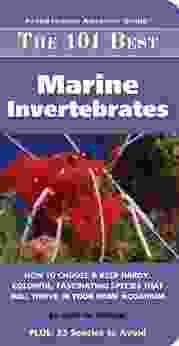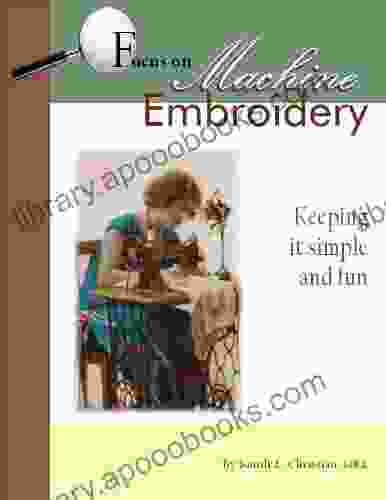Nuts, Bolts, Fuel, Brake Oil, and Coolant Lines: A Comprehensive Guide


Nuts, bolts, fuel, brake oil, and coolant lines are all essential components of a vehicle's engine. While they may seem like small and insignificant parts, they play a vital role in keeping your car running smoothly and safely.
4.5 out of 5
| Language | : | English |
| File size | : | 5051 KB |
| Text-to-Speech | : | Enabled |
| Screen Reader | : | Supported |
| Enhanced typesetting | : | Enabled |
| Word Wise | : | Enabled |
| Print length | : | 499 pages |
In this guide, we will discuss the different types of nuts, bolts, fuel, brake oil, and coolant lines, as well as their materials, sizes, and uses. We will also provide some tips on how to choose the right parts for your vehicle and how to install them properly.
Nuts
Nuts are used to fasten two or more objects together. They are typically made of steel or brass, and they come in a variety of shapes and sizes. The most common types of nuts are hex nuts, square nuts, and wing nuts.
* Hex nuts are the most common type of nut. They have six sides, and they are typically tightened with a wrench. * Square nuts are similar to hex nuts, but they have four sides instead of six. They are often used in applications where space is limited. * Wing nuts have two wings that can be tightened by hand. They are often used in applications where quick and easy access is required.
Bolts
Bolts are similar to nuts, but they have a threaded shank that allows them to be inserted into a hole. Bolts are typically used to fasten two or more objects together, and they come in a variety of lengths, diameters, and materials.
The most common types of bolts are hex bolts, square bolts, and carriage bolts.
* Hex bolts are the most common type of bolt. They have a hexagonal head, and they are typically tightened with a wrench. * Square bolts are similar to hex bolts, but they have a square head instead of a hexagonal head. They are often used in applications where space is limited. * Carriage bolts have a round head with a square neck. They are often used in applications where the bolt head needs to be recessed below the surface of the material.
Fuel
Fuel is the lifeblood of your vehicle's engine. It provides the energy that the engine needs to operate, and it is delivered to the engine through a series of fuel lines. Fuel lines are typically made of rubber or steel, and they come in a variety of sizes and lengths.
The most common types of fuel lines are gasoline lines, diesel lines, and propane lines.
* Gasoline lines are used to transport gasoline from the fuel tank to the engine. They are typically made of rubber, and they are resistant to the corrosive effects of gasoline. * Diesel lines are used to transport diesel fuel from the fuel tank to the engine. They are typically made of steel, and they are resistant to the high pressures that are generated by diesel engines. * Propane lines are used to transport propane gas from the fuel tank to the engine. They are typically made of copper, and they are resistant to the corrosive effects of propane gas.
Brake Oil
Brake oil is essential for the proper functioning of your vehicle's brakes. It helps to lubricate the brake components and prevents them from overheating. Brake oil is also hygroscopic, which means that it absorbs moisture from the air. This moisture can cause the brake oil to deteriorate over time, which can lead to brake failure.
There are two main types of brake oil: DOT 3 and DOT 4. DOT 3 brake oil is the most common type of brake oil, and it is suitable for most vehicles. DOT 4 brake oil has a higher boiling point than DOT 3 brake oil, and it is recommended for use in high-performance vehicles.
Coolant
Coolant is essential for keeping your vehicle's engine cool. It circulates through the engine and absorbs heat from the engine components. The coolant then flows through the radiator, where it is cooled by the air passing through the radiator.
There are two main types of coolant: ethylene glycol and propylene glycol. Ethylene glycol coolant is the most common type of coolant, and it is suitable for most vehicles. Propylene glycol coolant is a non-toxic alternative to ethylene glycol coolant, and it is recommended for use in vehicles that are used in food or beverage processing.
Lines, Hoses, and Clamps
Lines, hoses, and clamps are used to connect the different components of your vehicle's engine. Lines are typically made of metal or plastic, and they are used to transport fluids such as fuel, brake oil, and coolant. Hoses are typically made of rubber or silicone, and they are used to connect lines to different components of the engine. Clamps are used to secure lines and hoses to the engine.
The most common types of lines are fuel lines, brake lines, and coolant lines. Fuel lines are used to transport fuel from the fuel tank to the engine. Brake lines are used to transport brake fluid from the master cylinder to the brake calipers. Coolant lines are used to transport coolant from the radiator to the engine.
The most common types of hoses are radiator hoses, heater hoses, and vacuum hoses. Radiator hoses are used to connect the radiator to the engine. Heater hoses are used to connect the heater core to the engine. Vacuum hoses are used to connect the vacuum pump to the different components of the engine.
The most common types of clamps are hose clamps, fuel line clamps, and coolant line clamps. Hose clamps are used to secure hoses to lines. Fuel line clamps are used to secure fuel lines to the engine. Coolant line clamps are used to secure coolant lines to the engine.
Choosing the Right Parts
When choosing the right nuts, bolts, fuel
4.5 out of 5
| Language | : | English |
| File size | : | 5051 KB |
| Text-to-Speech | : | Enabled |
| Screen Reader | : | Supported |
| Enhanced typesetting | : | Enabled |
| Word Wise | : | Enabled |
| Print length | : | 499 pages |
Do you want to contribute by writing guest posts on this blog?
Please contact us and send us a resume of previous articles that you have written.
 Book
Book Novel
Novel Page
Page Chapter
Chapter Text
Text Story
Story Genre
Genre Reader
Reader Library
Library Paperback
Paperback E-book
E-book Magazine
Magazine Newspaper
Newspaper Paragraph
Paragraph Sentence
Sentence Bookmark
Bookmark Shelf
Shelf Glossary
Glossary Bibliography
Bibliography Foreword
Foreword Preface
Preface Synopsis
Synopsis Annotation
Annotation Footnote
Footnote Manuscript
Manuscript Scroll
Scroll Codex
Codex Tome
Tome Bestseller
Bestseller Classics
Classics Library card
Library card Narrative
Narrative Biography
Biography Autobiography
Autobiography Memoir
Memoir Reference
Reference Encyclopedia
Encyclopedia Patricia Steele
Patricia Steele Rich Deakin
Rich Deakin Lara Foot Newton
Lara Foot Newton Sulayman Al Bassam
Sulayman Al Bassam John T Mackenzie
John T Mackenzie John Sneeden
John Sneeden Timothy P Carney
Timothy P Carney Petos
Petos Max Wallace
Max Wallace Linda Mason
Linda Mason Johnny Ray
Johnny Ray Nicola Quinn
Nicola Quinn Joseph Osmundson
Joseph Osmundson John M Cooper
John M Cooper Ramon Burton
Ramon Burton John Mackey
John Mackey Geraldine K Piorkowski
Geraldine K Piorkowski Jordan Tannahill
Jordan Tannahill Jonathan M Katz
Jonathan M Katz John Mole
John Mole
Light bulbAdvertise smarter! Our strategic ad space ensures maximum exposure. Reserve your spot today!

 Mark TwainRafe Mackade's Triumphant Return: The Mackade Brothers Book Explodes Onto the...
Mark TwainRafe Mackade's Triumphant Return: The Mackade Brothers Book Explodes Onto the... Liam WardFollow ·10.5k
Liam WardFollow ·10.5k Eddie PowellFollow ·2k
Eddie PowellFollow ·2k Felipe BlairFollow ·8.8k
Felipe BlairFollow ·8.8k Leon FosterFollow ·17.1k
Leon FosterFollow ·17.1k Frank ButlerFollow ·16.7k
Frank ButlerFollow ·16.7k Brennan BlairFollow ·17.9k
Brennan BlairFollow ·17.9k Guillermo BlairFollow ·9.7k
Guillermo BlairFollow ·9.7k Dwight BellFollow ·15.5k
Dwight BellFollow ·15.5k

 Tyler Nelson
Tyler NelsonHer Dragon to Slay: Embark on an Epic Journey of...
In a realm where shadows dance and legends...

 Zachary Cox
Zachary Cox101 Best Marine Invertebrates: The Adventurous Aquarist's...
Unveiling the Enchanting Realm...

 William Wordsworth
William WordsworthHer Dragon Fire: Unleash the Power Within Your Soul
Embark on an...

 William Powell
William PowellUnveiling the Enchanting World of Machine Embroidery with...
Embroidery, an ancient art form that has...

 Will Ward
Will WardGolden Fire Clan Dragon Guard: A Journey into a Realm of...
Prepare to be...

 Gustavo Cox
Gustavo CoxProject Ideas to Elevate Your Hobbies and Flourish Your...
<p>Welcome to the ultimate guide to...
4.5 out of 5
| Language | : | English |
| File size | : | 5051 KB |
| Text-to-Speech | : | Enabled |
| Screen Reader | : | Supported |
| Enhanced typesetting | : | Enabled |
| Word Wise | : | Enabled |
| Print length | : | 499 pages |










